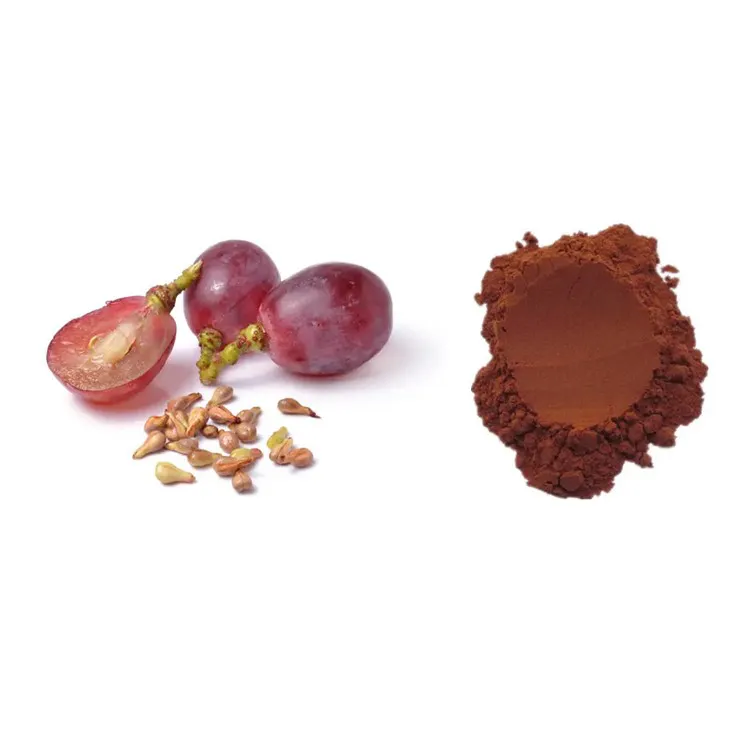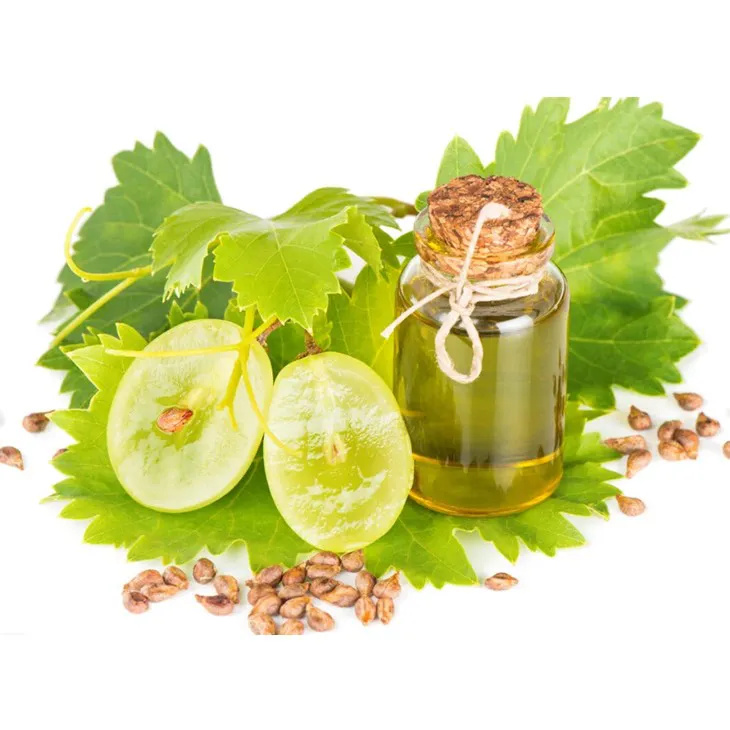- 0086-571-85302990
- sales@greenskybio.com
Natural Grape Seed Extract Products: Which Extraction Technologies Should Your Company Invest In?
2024-12-17

1. Introduction
The natural Grape Seed Extract products have witnessed a surging demand in the health and beauty industries in recent years. These products are rich in polyphenols, proanthocyanidins, and other bioactive compounds, which endow them with antioxidant, anti - inflammatory, and anti - aging properties. As a result, numerous companies are eager to enter this lucrative market. However, the quality of Grape Seed Extracts highly depends on the extraction technology employed. In this article, we will explore several key extraction technologies and discuss which ones are worthy of investment for companies.

2. Solvent - based Extraction
2.1. Principle Solvent - based extraction is one of the most traditional methods for obtaining Grape Seed Extracts. It mainly utilizes organic solvents, such as ethanol, methanol, or acetone, to dissolve the bioactive components present in grape seeds. The solvent penetrates the cell walls of the grape seeds, and then, through processes like filtration and evaporation, the extract is separated from the solvent.
2.2. Advantages
- Low Cost: Solvent - based extraction is relatively inexpensive compared to some other advanced extraction methods. The solvents are widely available, and the equipment required for this process is not overly complex, which reduces the initial investment for companies.
- High Yield: This method can generally achieve a relatively high yield of grape seed extracts. It can effectively extract a large amount of bioactive components from grape seeds, which is beneficial for large - scale production.
2.3. Disadvantages
- Extract Quality Concerns: The use of organic solvents may lead to the presence of solvent residues in the final extract. These residues can have potential negative impacts on the quality and safety of the product, especially in applications related to the health and beauty industries where high - purity products are required.
- Environmental Issues: Organic solvents are often volatile and flammable, posing risks to the environment and workplace safety. Moreover, the disposal of used solvents requires proper treatment to avoid environmental pollution, which adds to the overall cost.

3. Supercritical CO2 Extraction
3.1. Principle Supercritical CO2 extraction is a more advanced and environmentally friendly extraction technology. Carbon dioxide (CO2) is used as the extraction solvent. When CO2 is brought to its supercritical state (above its critical temperature and pressure), it exhibits unique properties, such as high diffusivity and low viscosity. In this state, CO2 can effectively penetrate the cell walls of grape seeds and dissolve the target bioactive components. By adjusting the pressure and temperature, the solubility of different components in CO2 can be controlled, allowing for selective extraction.
3.2. Advantages
- High - Quality Extracts: Supercritical CO2 extraction can produce high - purity grape seed extracts with minimal solvent residues. Since CO2 is a gas at normal conditions, it can be easily removed from the extract, leaving behind a clean and pure product. This is highly desirable in the health and beauty industries where product quality and safety are of utmost importance.
- Green Chemistry: CO2 is a non - toxic, non - flammable, and environmentally friendly solvent. It does not contribute to air pollution or pose significant safety risks in the workplace. Additionally, the recycling of CO2 is relatively easy, reducing the environmental impact of the extraction process.
- Selective Extraction: This technology allows for the selective extraction of specific bioactive components from grape seeds. By precisely controlling the extraction conditions, companies can target the extraction of components with the highest value, such as specific polyphenols or proanthocyanidins, which can enhance the competitiveness of their products.
3.3. Disadvantages
- High Equipment Cost: The equipment required for supercritical CO2 extraction is relatively expensive. It needs to be able to withstand high pressures and precise temperature control, which demands a significant initial investment.
- Complex Operation: The operation of supercritical CO2 extraction equipment is more complex compared to solvent - based extraction. It requires trained personnel to ensure proper operation and maintenance, which also adds to the overall cost.

4. Enzyme - Assisted Extraction
4.1. Principle Enzyme - assisted extraction is an innovative approach in the field of grape seed extraction. Enzymes, such as cellulase, pectinase, or hemicellulase, are used to break down the cell walls of grape seeds. Grape seeds have complex cell wall structures that can limit the release of bioactive components. Enzymes can selectively hydrolyze the polysaccharides in the cell walls, making the cell walls more permeable and facilitating the extraction of desired components.
4.2. Advantages
- Enhanced Extraction Efficiency: By breaking down the cell walls, enzymes can significantly improve the extraction efficiency of bioactive components from grape seeds. This can lead to a higher yield of valuable components in a shorter extraction time.
- Mild Conditions: Enzyme - assisted extraction usually operates under milder conditions compared to solvent - based extraction. This helps to preserve the integrity of the bioactive components, ensuring that their biological activities are not significantly affected.
- Specificity: Different enzymes can be selected according to the specific components to be extracted. This allows for a more targeted extraction, enabling companies to obtain extracts with specific properties or functions.
4.3. Disadvantages
- Enzyme Cost: The cost of enzymes can be relatively high, especially for high - quality and specific enzymes. This can increase the production cost of grape seed extracts.
- Enzyme Stability: Enzymes are sensitive to environmental factors such as temperature, pH, and substrate concentration. Maintaining the stability of enzymes during the extraction process can be a challenge, and any deviation from the optimal conditions may reduce their effectiveness.

5. Comparison and Selection for Companies
5.1. Consideration of Product Quality For companies targeting high - end health and beauty markets, product quality is crucial. In this regard, supercritical CO2 extraction and enzyme - assisted extraction have certain advantages over solvent - based extraction. Supercritical CO2 extraction can produce high - quality extracts with minimal solvent residues, while enzyme - assisted extraction can preserve the biological activities of components better. However, if cost is a major consideration and the target market has less strict requirements for purity, solvent - based extraction may still be an option.
5.2. Cost - Benefit Analysis
- Solvent - based extraction has a lower initial investment and operating cost, but it may face potential costs related to solvent disposal and product quality control.
- Supercritical CO2 extraction has a high equipment cost and complex operation, but it can produce high - value products with good market competitiveness, which may offset the high cost in the long run.
- Enzyme - assisted extraction has the cost of enzymes and the challenge of enzyme stability, but its enhanced extraction efficiency and product quality can also bring economic benefits.
5.3. Environmental and Safety Considerations In today's environmentally conscious era, companies are also required to consider the environmental and safety impacts of their production processes. Supercritical CO2 extraction is the most environmentally friendly option, followed by enzyme - assisted extraction. Solvent - based extraction has more environmental and safety risks due to the use of organic solvents.

6. Conclusion
In conclusion, when it comes to choosing an extraction technology for Natural grape seed extract products, companies need to consider multiple factors, including product quality, cost - benefit, and environmental and safety aspects. Each extraction technology has its own advantages and disadvantages. Solvent - based extraction is a cost - effective option with some limitations. Supercritical CO2 extraction is a high - quality and environmentally friendly method but with a high initial investment. Enzyme - assisted extraction is an innovative approach with potential for improved extraction efficiency. Companies should make a comprehensive evaluation based on their own resources, market positioning, and long - term development goals to select the most suitable extraction technology for their production of Natural grape seed extract products.
FAQ:
What are the main extraction technologies for Natural grape seed extract?
The main extraction technologies for natural grape seed extract include solvent - based extraction, supercritical CO2 extraction, and enzyme - assisted extraction.
What are the limitations of solvent - based extraction?
Solvent - based extraction has limitations in terms of extract quality and environmental friendliness.
Why is supercritical CO2 extraction considered a superior method?
Supercritical CO2 extraction is considered a superior method because it not only ensures high - quality extracts but also meets the requirements of green chemistry.
How does enzyme - assisted extraction work?
Enzyme - assisted extraction works by using enzymes to selectively break down cell walls of grape seeds, facilitating the extraction of desired components.
How can enterprises choose the right extraction technology?
Enterprises can evaluate the extract quality, environmental friendliness, and cost - effectiveness of different extraction technologies to choose the right one. They also need to consider their market positioning and the requirements of their target customers.
Related literature
- Recent Advances in Grape Seed Extract: Composition, Biological Activities, and Applications"
- "Green Extraction Technologies for Grape Seed: A Review"
- "The Impact of Extraction Methods on the Quality of Grape Seed Extract"
- ▶ Hesperidin
- ▶ Citrus Bioflavonoids
- ▶ Plant Extract
- ▶ lycopene
- ▶ Diosmin
- ▶ Grape seed extract
- ▶ Sea buckthorn Juice Powder
- ▶ Fruit Juice Powder
- ▶ Hops Extract
- ▶ Artichoke Extract
- ▶ Mushroom extract
- ▶ Astaxanthin
- ▶ Green Tea Extract
- ▶ Curcumin
- ▶ Horse Chestnut Extract
- ▶ Other Product
- ▶ Boswellia Serrata Extract
- ▶ Resveratrol
- ▶ Marigold Extract
- ▶ Grape Leaf Extract
- ▶ New Product
- ▶ Aminolevulinic acid
- ▶ Cranberry Extract
- ▶ Red Yeast Rice
- ▶ Red Wine Extract
-
Agaricus Blazei Extract
2024-12-17
-
Genistein
2024-12-17
-
Kelp Extract Powder
2024-12-17
-
Red Date Extract
2024-12-17
-
Selenium yeast
2024-12-17
-
Pine bark Extract Powder
2024-12-17
-
Green coffee bean Extract
2024-12-17
-
Garcinia Cambogia Extract
2024-12-17
-
Cranberry Extract
2024-12-17
-
Calendula Extract
2024-12-17





















